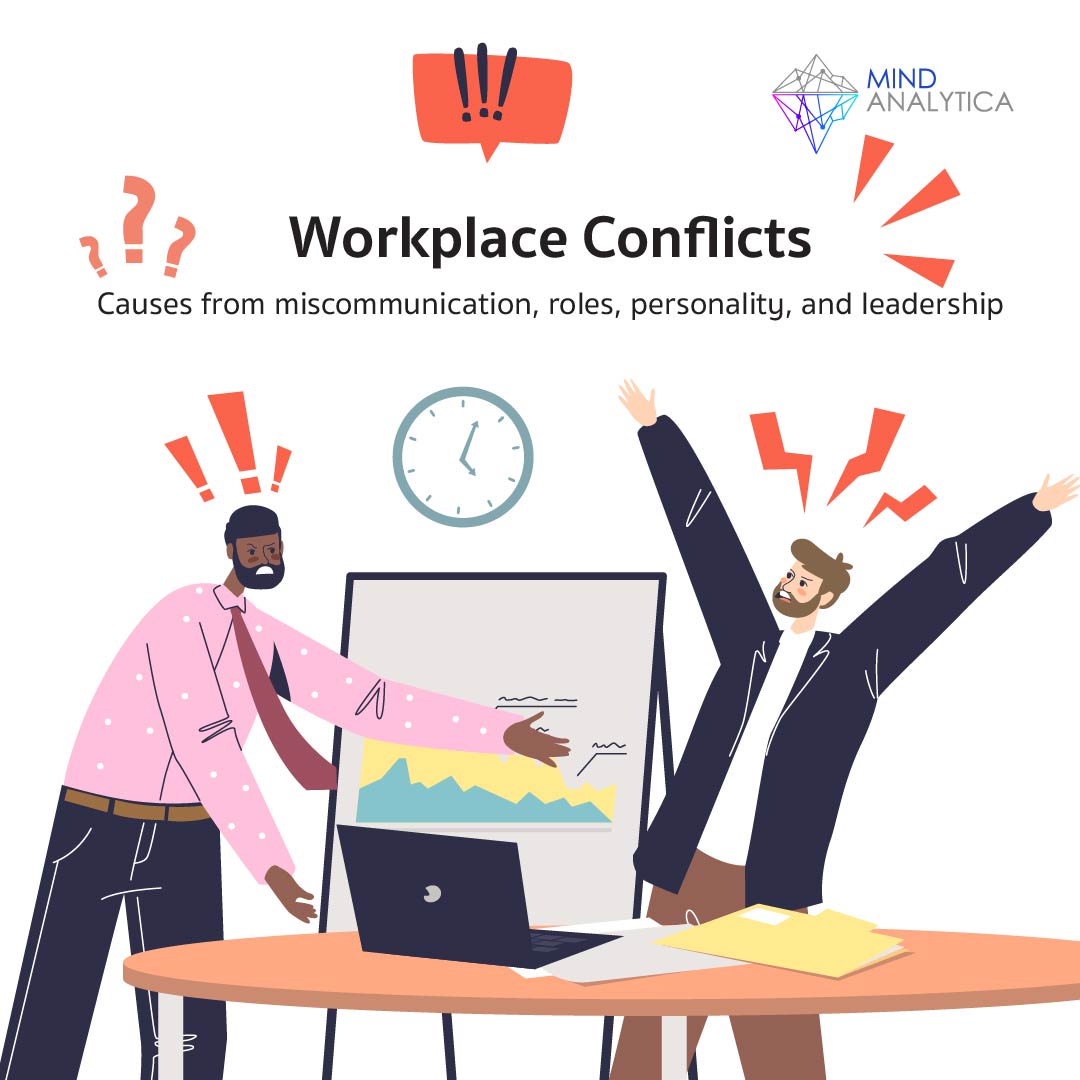Workplace Conflict
29 เมษายน 2567 - เวลาอ่าน 4 นาที
Causes from communication, roles, personality, and leadership
The workplace is a place where many people come together to carry out the work of the organization they are members of. However, with the diversity of people in the organization, there will be a diversity of thoughts. When this diversity is communicated in an inappropriate, incomplete, or inappropriate way, it can lead to misinterpretation and conflict.
Workplace conflict can be broadly divided into two types:
- Conflict in the content of the work: This type of conflict arises from efforts to solve problems from different perspectives, mindsets, and opinions. This form of conflict is often found to lead to creativity or positive conflict perception.
- Relational conflict: This type of conflict occurs at the level of personal or family values, norms, or personal tastes. This form of conflict is often perceived negatively, as it leads to a decrease in productivity and motivation to work.
Causes of workplace conflict
- Communication of inaccurate or incorrect information, or poor communication methods. These often arise from team members having access to certain information that others do not, or even when they have equal access to information but have different understandings of it based on their professional understanding and roles.
- Differences in roles and responsibilities. This has a significant impact as each role has different decision-making processes and priorities for certain issues.
- Certain personality traits can also lead to conflict, such as perfectionism or impulsiveness.
Conflict in the online world
Today's communication also includes company personnel interacting with each other through online channels, such as email, chat, and social media. However, communication through online channels also has limitations, as it lacks non-verbal communication, which can lead to misinterpretation of the meaning of communication. And some types of communication through text alone are not enough. Conflict therefore arises between the sender and the receiver in the workplace.
Effects of unresolved conflict:
- Indirect effects: Bad public image, newspaper headlines, decreased employee morale, higher turnover rates, use of resources to manage conflict.
- Direct effects: Barriers to communication between team members, especially when effective communication is of paramount importance in safety-first industries.
Conflict from leaders
One of the leader's responsibilities is to use conflict management strategies in their team or organization for the needs of the team without any limitations and personal gain of the leader themselves. However, when conflict between leaders themselves or between leaders and followers negatively affects commitment, which means a positive emotional attachment to the organization, it leads to followers avoiding encounters with leaders or eventually resigning.
Workplace conflict management is important because the potential consequences can be serious, ranging from team performance to public image. Team leaders can prevent conflict from the outset by understanding the personality traits of the individuals who will become team members. Understanding will help anticipate and deal with individuals with positive or negative personalities towards conflict using appropriate human resource management strategies. And when conflict arises, it is necessary to use a neutral, transparent approach that focuses on finding common ground so that the conflict can be reduced and workplace relationships can be maintained.
Original article:Lim, J. H., & Yazdanifard, R. (2012). The difference of conflict management styles and conflict resolution in workplace. Business & Entrepreneurship Journal, 1(1), 141-155.



